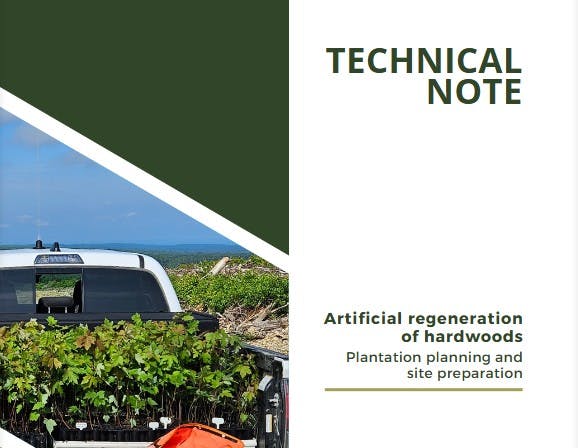Working with nature
Upon consultation, the property owner wanted to allow the beavers to thrive as they followed their natural pattern of modifying nature to suit their needs. To reforest the area filled with standing, dead, flood-damaged birch trees, the decision was made to plant native black spruce and tamarack trees in their place. There is an extensive birch seed bed in place, which will allow the species to regenerate. However, it will be mixed with more flood-tolerant species to increase the forest's resilience. Black spruce and tamarack occur naturally on the property within 150 m of this area and are not preferred by beavers, so they were a natural choice for this tree planting project.
Seed sourcing and local adaptation
There was no registered seed for the desired species in the local seed zone (AB DM 2.2, Dry Mixedwood Plains), so the closest seed zone (AB CM 3.1, Central Mixedwood) with tamarack and black spruce was used. The site is within 40 km of the CM 3.1 seed zone, which has a similar elevation; therefore, the trees should be well adapted to the site. The aspen and balsam poplar were both suckering from their root systems, so replanting them was unnecessary. The shrub layer, which consisted predominantly of willows, continues to thrive in small pockets throughout the property, so it was not required in the planting prescription either.
Long-term project update
The black spruce and tamarack seedlings had a high success rate due to the ideal match between the planted species and the moisture content and soil composition. The seedlings are also taking advantage of the protection from the mature stands of established trees in two directions, and they are thriving—as are the beavers.
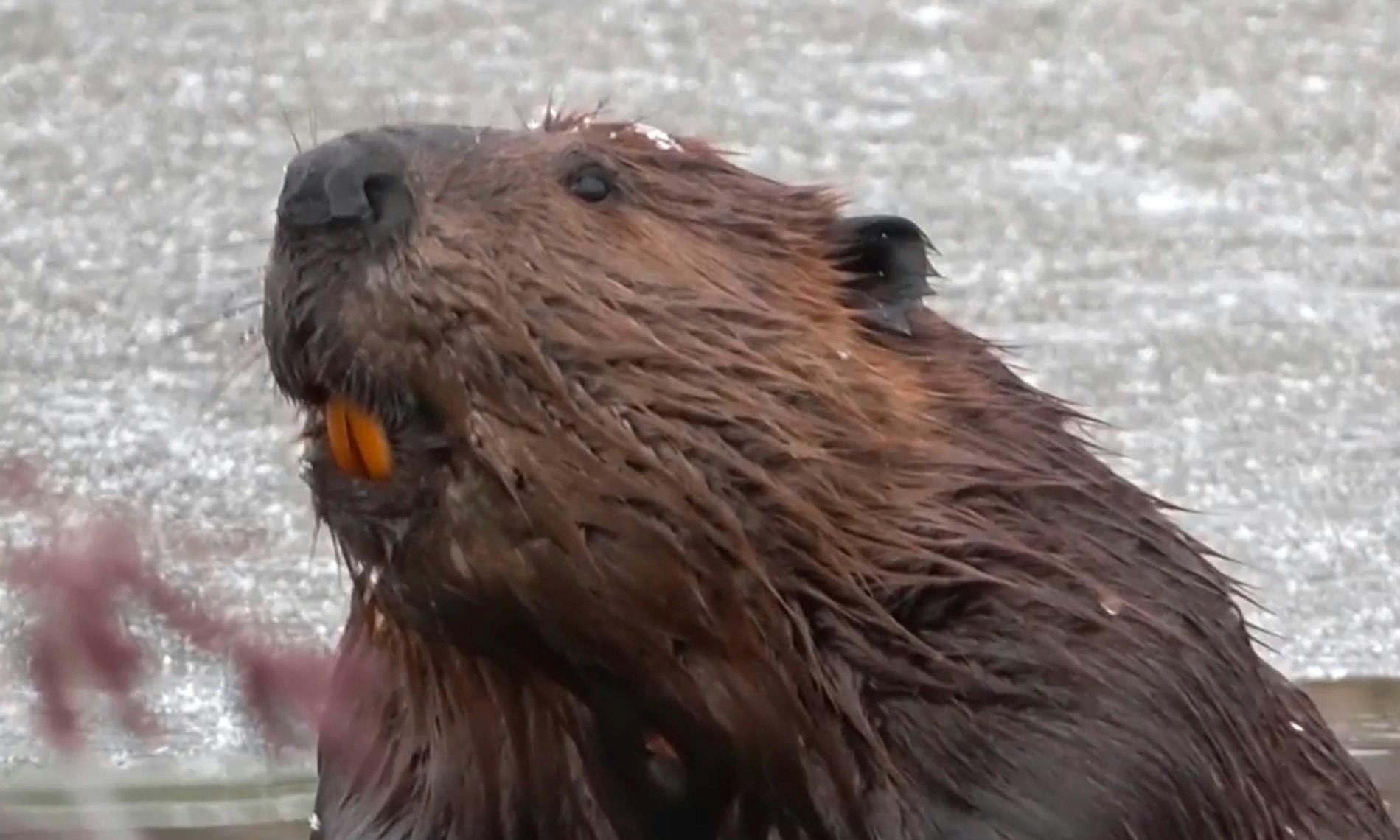

Beaver lodge
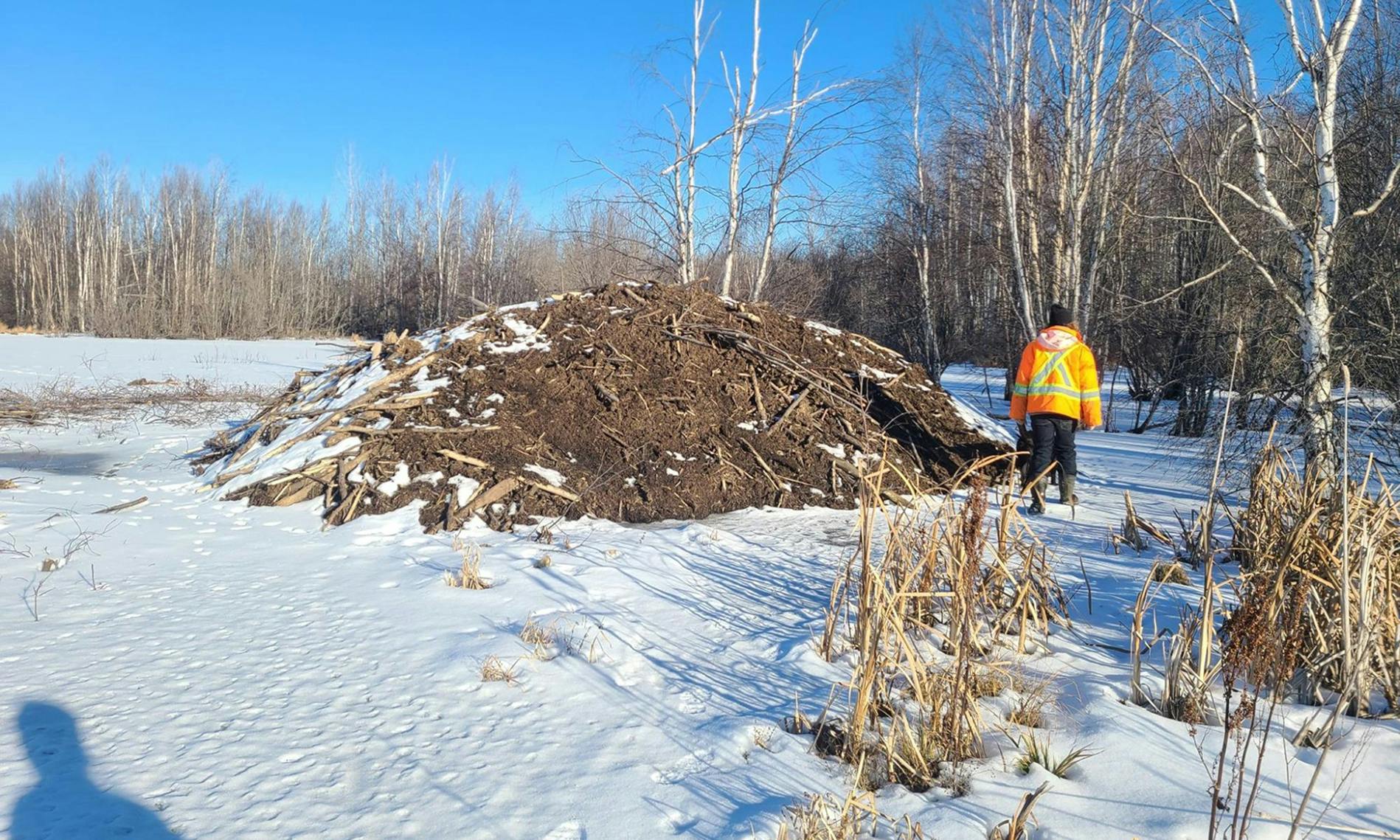
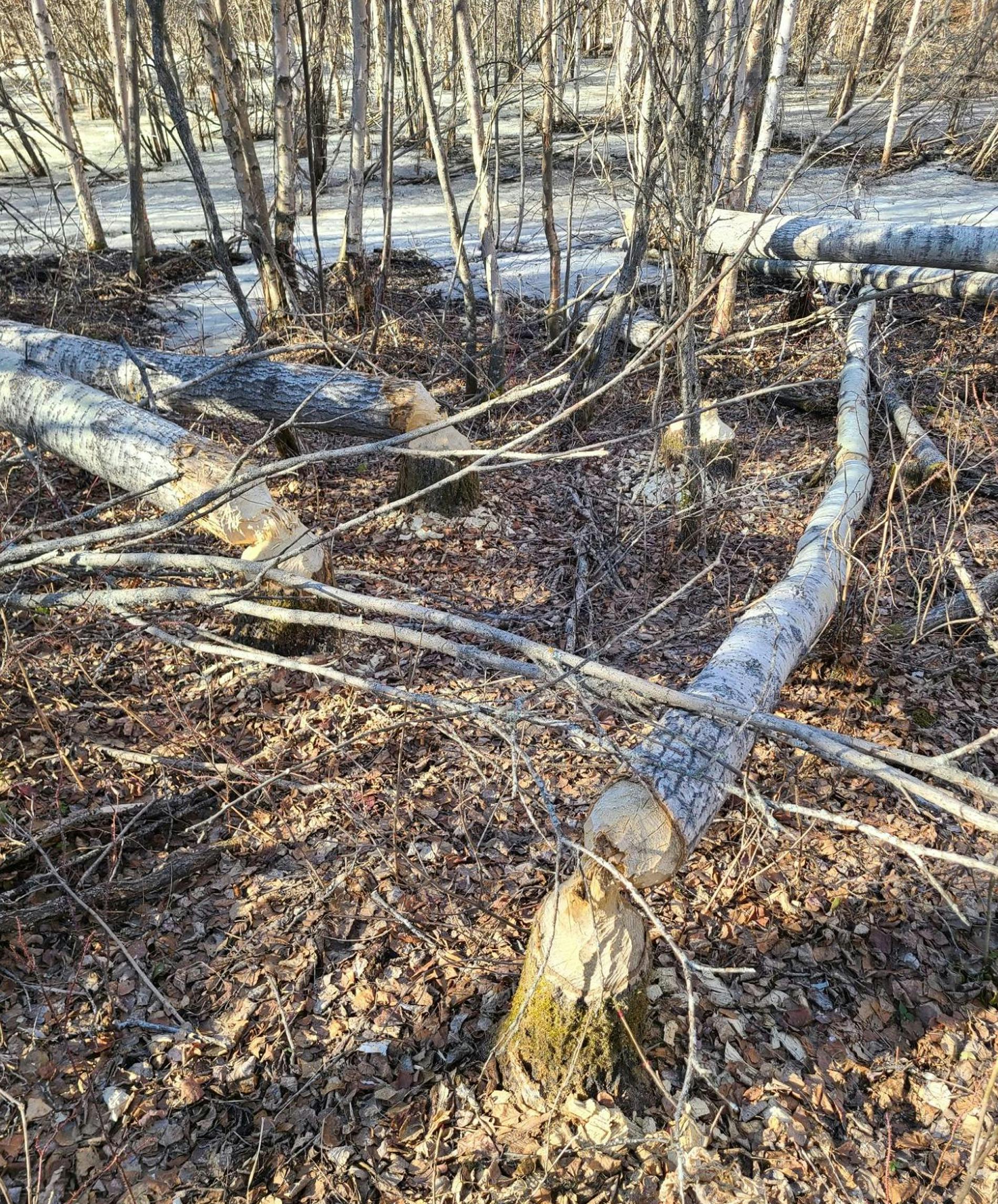
Beaver-felled aspen trees along an elevated ridge with flooded birch
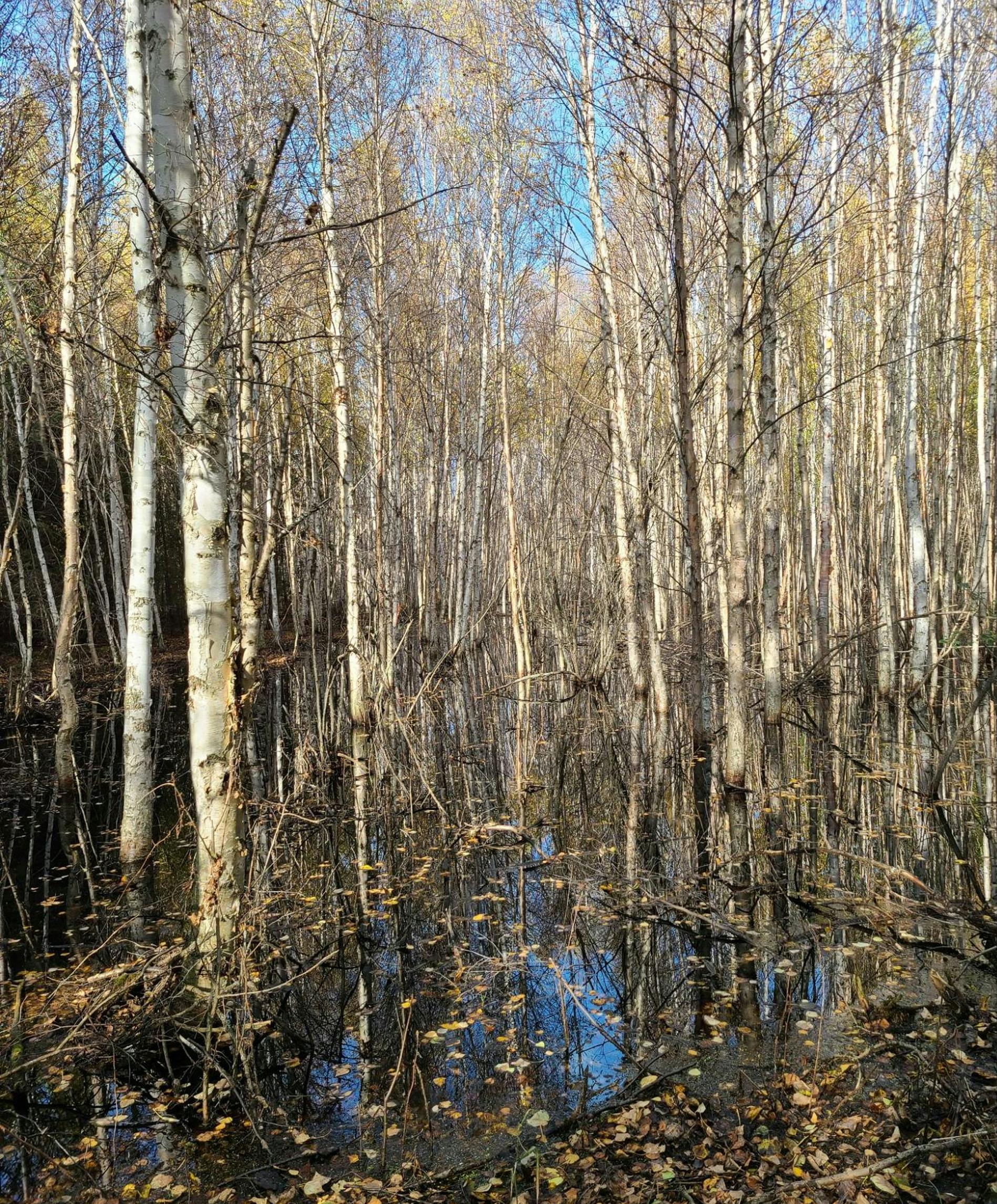
Flooded paper birch trees that suffered 90% mortality in the following year


